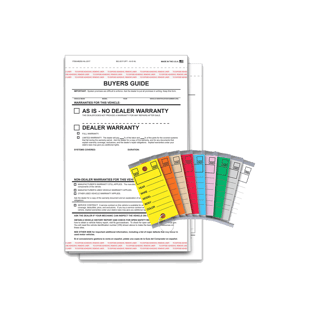
2023 Fuel Economy Guide
The 2023 Fuel Economy Guide was recently released by the US Department of Energy and Environmental Protection Agency. You can access the guide here or download now as a PDF. Paper guides are no longer mailed to dealers.
PARTNER SPOTLIGHT
Dealer Management System, Computer Technology, Media/Advertising, Automotive Auction, F & I/Aftermarket Products, Automotive Technology Training & Compliance
 A NHADA Gold PARTNER
A NHADA Gold PARTNERComputer Technology, Automotive Shop Equipment, Environmental Services
 A NHADA Platinum PARTNER
A NHADA Platinum PARTNERF & I/Aftermarket Products, Automotive Technology Training & Compliance, Environmental Services
.png?width=150&name=corp_logo_horz_on_light_with_trademark_symbol_1200w%20(002).png) A NHADA Diamond PARTNER
A NHADA Diamond PARTNERF & I/Aftermarket Products, Financial Services, Automotive Technology Training & Compliance
 A NHADA Diamond PARTNER
A NHADA Diamond PARTNERAccording to EPA Regulations, this guide must be displayed where new vehicles with a weight rating under 8,500 pounds are for sale. Dealers selling new vehicles must also provide free guides upon customer request. This can be honored with either a paper copy or an electronic version on a computer in the display area.
The purpose of the guide is to create a benchmark to compare vehicles based on their efficiency. Factors that contribute to Fuel Economy ratings include but are not limited to:
- Speed
- Rate of acceleration,
- Air conditioning usage, and
- Temperature operation
With weekly updates, this highly relevant source is reliable because it incorporates the Energy Information Administration's current national average prices for gasoline and diesel fuel.
A useful feature that has been created by Fueleconomy.gov is a widget that you can add to your website or social media page. This resource streamlines your potential customers shopping experience and makes the process much easier.
- Enhanced Electronic Access: The 2023 Fuel Economy Guide will be published in electronic format only. You can download the latest Fuel Economy Guide from the government’s fuel economy website by clicking here or visiting the dealer page and print copies from the electronic file as needed. The online Guide will be updated periodically to include newly released vehicle models and current fuel cost estimates.
- Display Signage: Dealers can download and print a sign/poster (scroll down) to place in their display area directing customers to the Fuel Economy Guide (this is optional and not required by law).
Please review this press release from the EPA for more information.


















.png?width=150&name=Ally_Final%20Logos%20and%20Pairings_11.14.2018-01%20(2).png)


-2.png?width=150&name=Wipfli%20Logo%20Blue%20RGB%20(1)-2.png)


.jpg?width=150&name=NHADA_Partner_FTR_Img_NHADA_Insurance%20(1).jpg)


.jpg?width=150&name=NHADA_Partner_FTR_Img_JMA(1).jpg)






